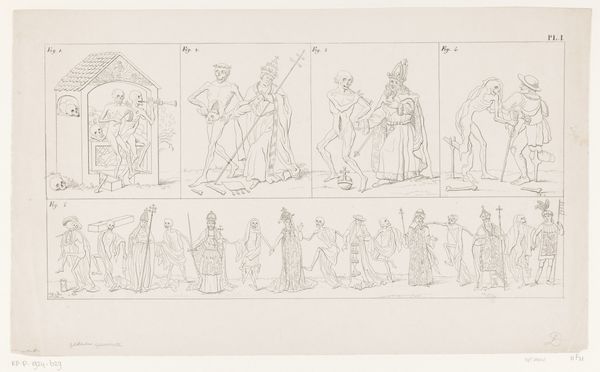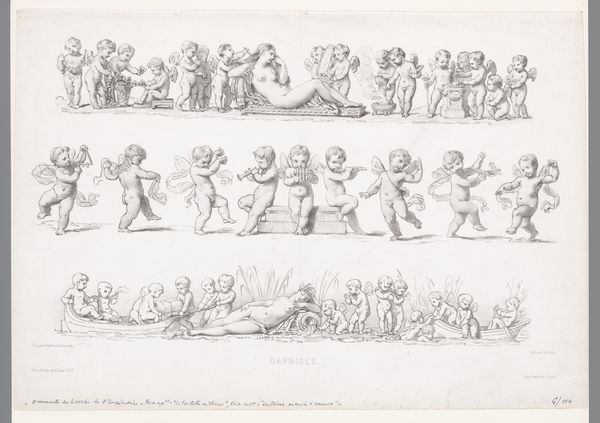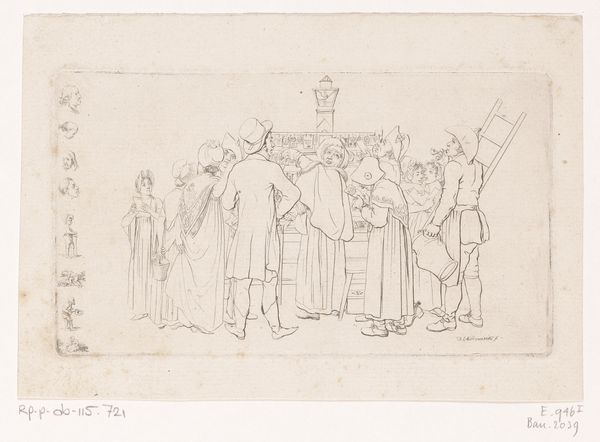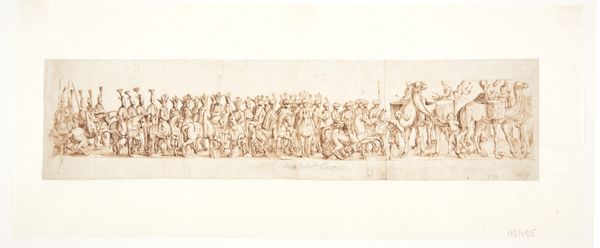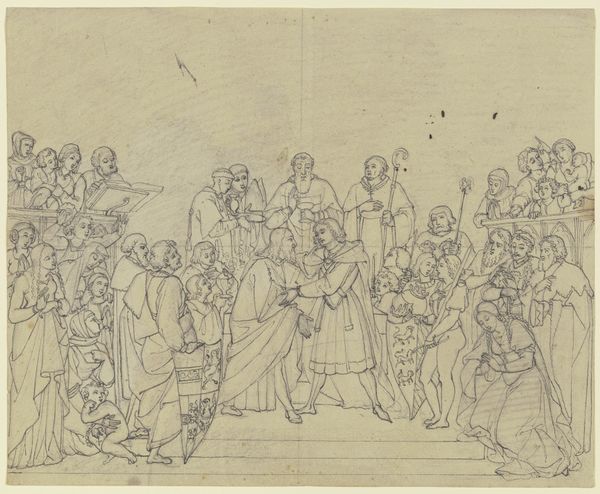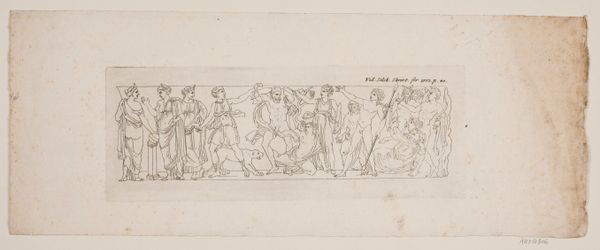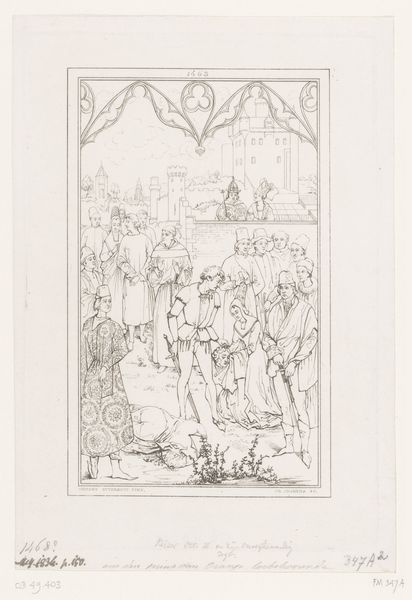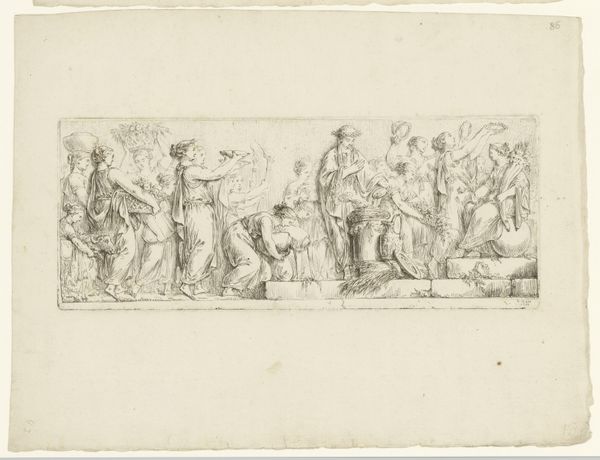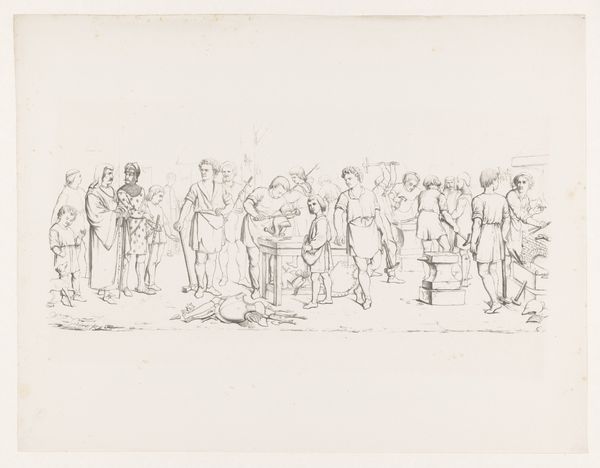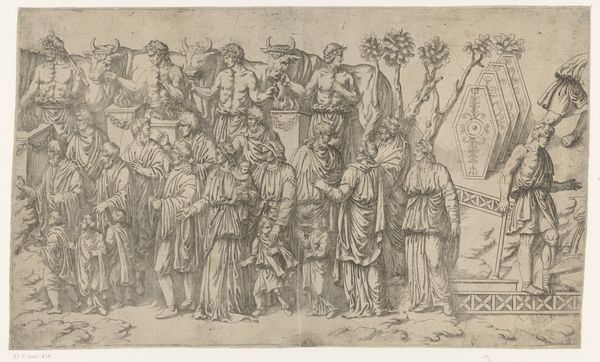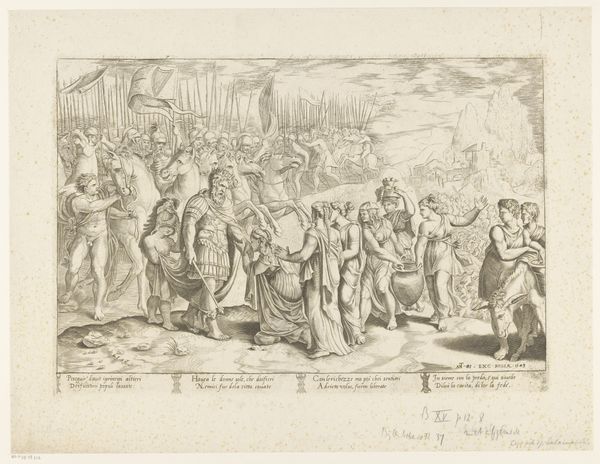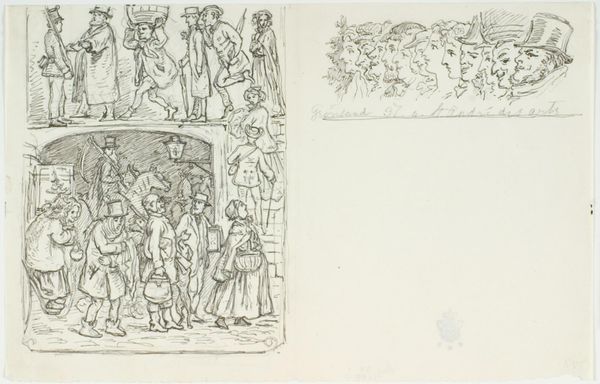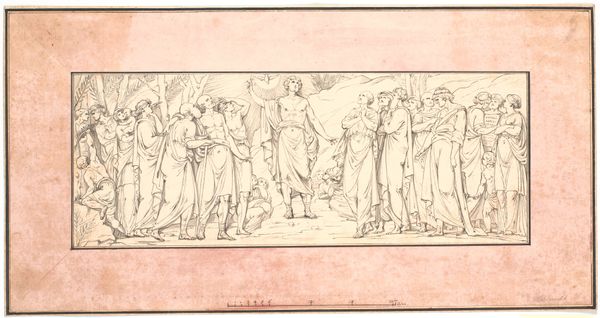
drawing, pencil
#
drawing
#
narrative-art
#
pen sketch
#
pencil sketch
#
landscape
#
figuration
#
romanticism
#
pencil
#
history-painting
Dimensions: height 246 mm, width 475 mm
Copyright: Rijks Museum: Open Domain
Editor: This drawing, "Begrafenisstoet (rechterdeel)," created around 1825 by Karl Sandhaas, uses pencil to depict what seems to be a funeral procession. I find the framing, with the ornate border, really curious and unlike anything I've seen. What strikes you when you look at this? Curator: The immediate impression is of Romanticism filtered through a very specific socio-political lens. Note how the procession, likely representing a traditional rite of passage, is both the central subject and is *framed*--literally and figuratively--by symbols hinting at established societal structures. Editor: You mean the upper and lower borders, with the cherubs and classical figures? Curator: Exactly. Ask yourself, who commissions and consumes imagery like this? In the early 19th century, art production wasn't separate from political power. This wasn't art for the masses. The elaborate border suggests a cultivated, possibly aristocratic, audience. The funerary theme, rendered with meticulous detail, speaks to their engagement with themes of mortality, history, and legacy. Editor: So, the drawing is not just about the funeral itself but about its meaning for the upper classes? Curator: Precisely. And think about how art itself functions as a status symbol within that class. By possessing such a drawing, patrons are aligning themselves with historical and cultural narratives deemed valuable. The drawing itself becomes part of their legacy. Is this an objective recording of the funeral, or is it subtly, through its style and framing, reinforcing certain social hierarchies? Editor: That framing definitely changes how I see the artwork. Now I see not only grief but also a subtle commentary on power. Thanks for illuminating the social context around its creation and potential patronage! Curator: Indeed, examining the historical context in which art is made provides crucial insights that you often miss at first glance.
Comments
No comments
Be the first to comment and join the conversation on the ultimate creative platform.
